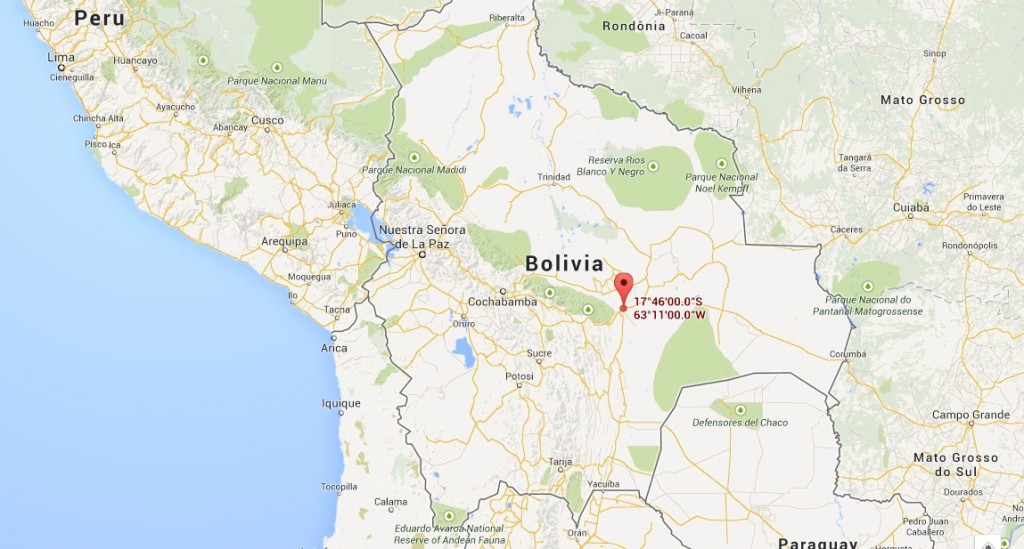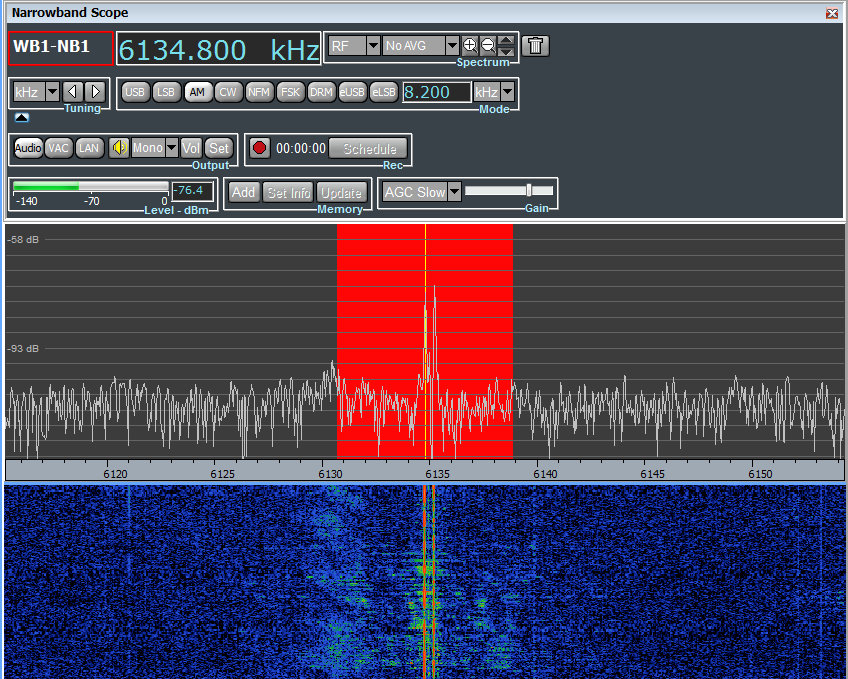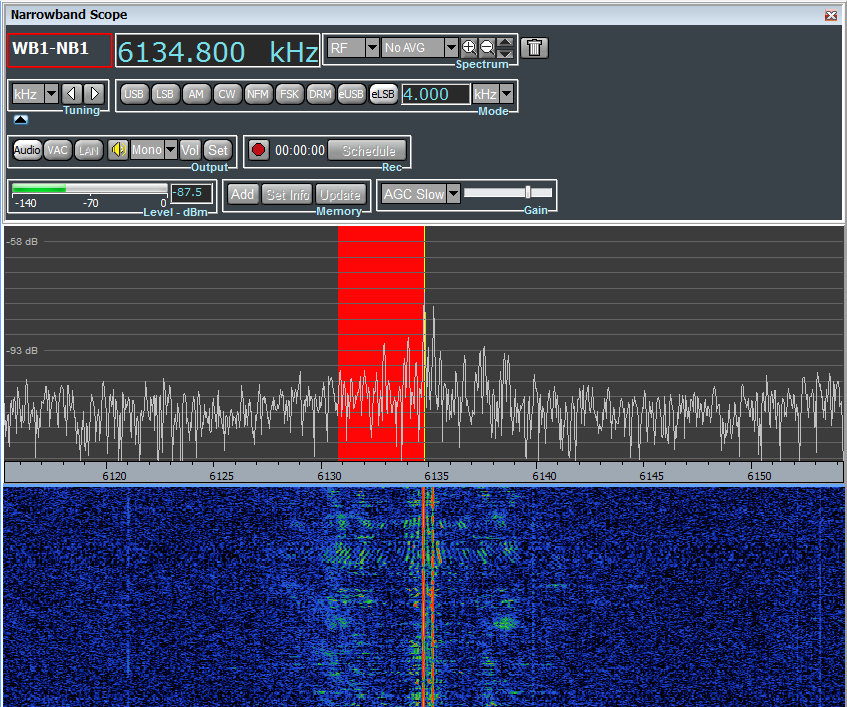 I recorded Radio Santa Cruz early this morning around 05:00 UTC on 6,135 kHz using the TitanSDR I currently have under review.
I recorded Radio Santa Cruz early this morning around 05:00 UTC on 6,135 kHz using the TitanSDR I currently have under review.
Radio Santa Cruz‘s 10 kW signal from Santa Cruz, Bolivia, was very much audible here in North America, though RSC was competing with another station on-frequency at the time. Actually, Radio Santa Cruz was broadcasting slightly off-frequency–6134.8 kHz instead of 6,135 kHz. In this case, the fact that RSC was slightly below frequency helped me delineate the station’s audio from that of a competing station.
In the screen-grab of the narrowband channel from the Titan SDR (above–click to enlarge) you can see two distinct carriers spaced only .2 kHz apart (represented by the two peaks in the spectrum display and two parallel vertical lines in the waterfall display).
Here is what the audio sounds like in normal AM mode when we center on the Radio Santa Cruz frequency of 6,134.8 kHz:
You hear a hetrodyne and garbled noise from a competing station. Not pleasant audio.
If we change from the AM mode to eLSB mode (essentially, the TitanSDR’s version of synchronous detection on the lower sideband) we are ignoring all of the noise in the upper sideband, allowing the desired signal of RSC to pop out.
You can see in the screen-grab above that now only the lower sideband of the RSC signal is highlighted. Here’s a 21 minute recording:
Makes quite a difference!
It’s easy to see competing signals and interference on an SDR’s spectrum display, but if you hear something similar on your portable, try the techniques above to see if it clears up the signal.
If your receiver lacks a selectable synchronous detector, much of the same results can be gained by zero-beating (tuning in) the desired signal in lower sideband mode. Of course, if you have a receiver that lacks SSB mode, the best you can do is tune slightly below frequency in AM, in which case the results will not be as dramatic.
Conclusion? Listening in single-sideband or with a selectable sync detector might be all you need to dig a signal out of the interference.



Hi Thomas,
When you get the chance I would be interested in one or more comparisons of “tough DX” reception between the TitanSDR and another SDR, such as the Elad FDM-S2. It would be fascinating to hear for ourselves what the extra cost of the TitanSDR provides in weak signal intelligibility.
Regards,
Guy
Hi Thomas,
Listened this evening (8 Feb at 0500z). Had no copy nor did I see any trace on the waterfall at 6134.8, therefore I presume SC was not copyable. However, did have a fair signal on 5135.26+/- peaking due east from here in Virginia. Must be R. Madagasikara. Does this sound right to you? Perhaps you have noted the offset mentioned above. Dan Ferguson’s spreadsheet does not show an offset like the listing for Santa Cruz does. So this may just be an oddity for this evening.
Regards,
George, NJ3H
Stephens City, VA
Perseus and Wellbrook ALA1530AL-2
Update:
At 0530 a very strong station cam on at exactly 6135.\, which due to the signal strength must be BBC on Ascension Isl. Just about obliterated the station on the offset mentioned previously.
Any thoughts will be appreciated.
I must say, I found the Santa Cruz files were very interesting to listen to. Thanks Thomas for posting them.
Hi, George,
I thought that the adjacent signal could have been R. Madagasikara. It was _very_ weak. It’s possible it could have been Radio Sanna, too. As for being off frequency, many South American stations actually transmit a little off-freq. Not sure why, but I can almost always ID a S. Am station if they’re a little off freq. 🙂
I really like this recording, too. Sometimes a recording captures all of the stuff I like hearing in a shortwave broadcast. In fact, I wrote a friend yesterday about the recording. Told him the qulities that made it sound so good: “A little interference, some washy static, a simple station ID, not too strong, not too weak…and the echo chamber of the announcer…what more could one ask for? THIS is why I love SW.”
-Thomas
None of your audio is working. I clicked on both audio streams and they didn’t play anything and the time never advanced.
When I clicked on the 21 minute hyperlink, I get the following error:
Page not found
We’re sorry, the page you have requested is not available.
Here’s the plain text link for your hyperlink:
https://ia902707.us.archive.org/32/items/RadioSantaCruz201502071233491/RadioSantaCruz-2015-02-07_12
Hi, John,
Thanks for the report–give it another shot. Not sure what’s happening with the site’s audio player. Used the Archive.org one instead. Seems to work for me now. Need to change a few older posts, too.
Cheers,
Thomas